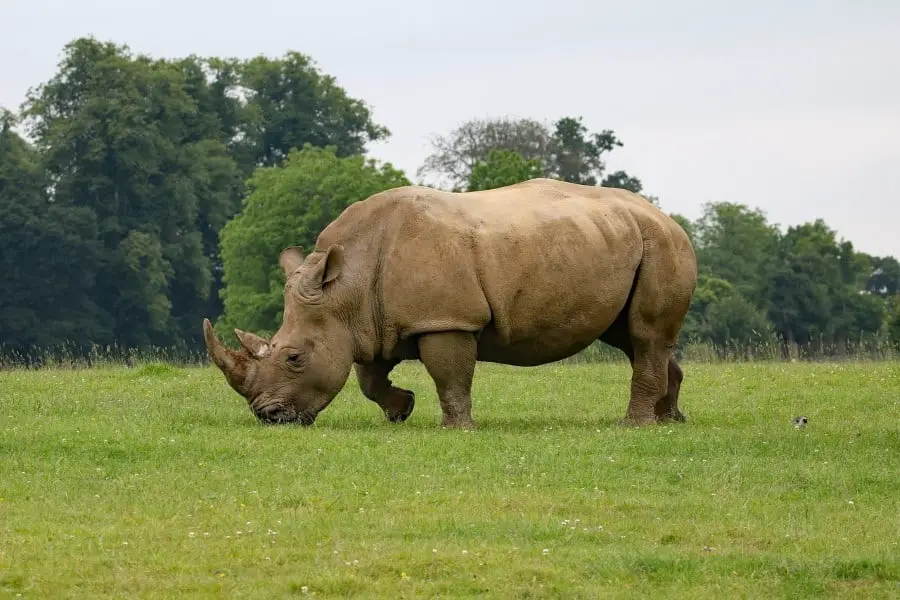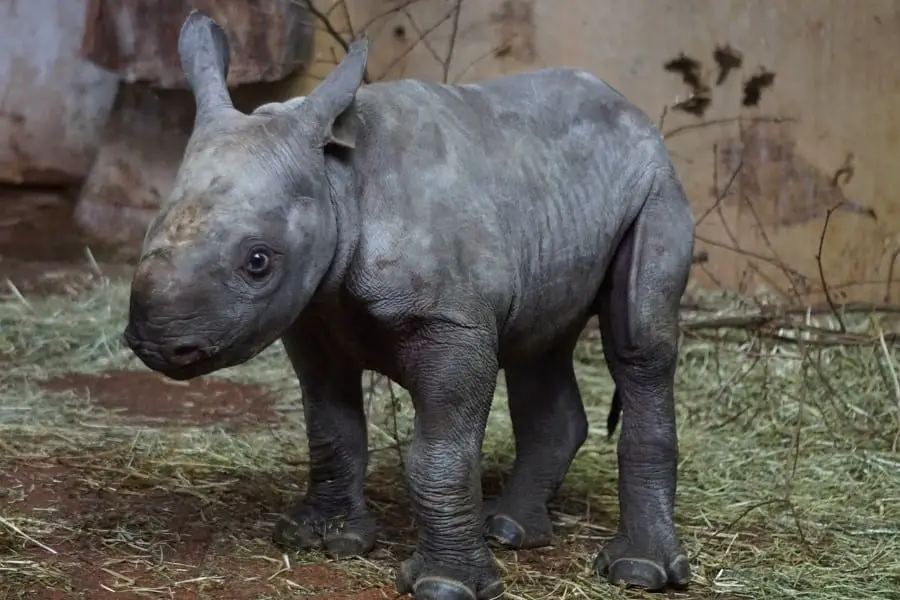You’d be forgiven for thinking that rhinos lay eggs, here we’re going to provide the best answer, and then we’re going to go on to explain why you might think they would lay eggs – or perhaps why they should lay eggs!
But first, here’s the quick answer on whether rhinos lay eggs to get you on the way, but there’s plenty more to this topic that makes people ask this question!
Do rhinos lay eggs? Rhinos do not lay eggs. People may view the rhino as being more of a prehistoric creature, many prehistoric creatures did indeed lay eggs. However, rhinoceros are mammals, so they give birth to one, sometimes two babies after a gestation period of between 15-18 months.
But did they once lay eggs? Let’s explore further.
So if dinosaurs laid eggs, then why doesn’t the rhinoceros lay eggs? Let’s explore this idea in more detail.

Where did rhinoceros come from?
Rhinoceros may appear to be pre-historic looking in nature, but in fact, they are mammals, and more a member of the ungulate family of species. Meaning they’re more akin to a tapir, or a horse than they are too ferocious meat-eating carnivores.
You should probably think of a rhino not as a tyrannosaurus rex, but more as a buck (male deer), or similar creature. The fact that they are large creatures with a horn simply adds to the wrong impression that they’re carnivores – like many dinosaurs used to be.
Here’s the taxonomic order of the rhinoceros:-
Kingdom: Animalia
Phylum: Chordata
Class: Mammalia
Order: Perissodactyla
Superfamily: Rhinocerotoidea
Family: Rhinocerotidae
Note that the key term here is Mammalia, or “Mammal”, Mammals the same as ungulates and humans, Mammals all follow a birth pattern similar in which the females of the species carry their young inside their womb internally and give birth after a gestation period.
The rhino gestation period is largely determined by the size of the mammal and hence the size of the young they produce.
Rhinoceros birth facts
After mating has taken place, and the female’s eggs have been fertilized, the female rhinoceros will generally carry and develop the young rhino inside her womb for anything from 15 to 18 months depending on the rhino species. Here are the three species and their approximate gestation periods…
- White rhinoceros – 16 to 18 months
- Black rhinoceros – 15 to 16 months
- Indian rhinoceros – 15 to 16 months
Baby rhinos are born live and fully formed. Except they’re born without a horn – relying on their mother for protection. They will remain with their mother for around 2 years before heading off to fend for themselves.

Could rhinos lay eggs?
Because of the physical anatomy of a rhino, it is not physically possible for them to lay eggs. They simply never evolved to give birth in this manner. The same way that horses haven’t.
If a rhino could lay eggs…
If a rhinoceros could lay eggs, they would need to be extremely large. Ungulates generally carry their young for a number of months in order that they can be fairly mobile and have their wits about them from birth.
For an egg to accomplish this, you would probably be looking at an egg of around a foot in length, and then (similar to birds) the mother would need to not only incubate the eggs before birth which is difficult for a creature this size and weight, but they would also need a nest in order to care for the underdeveloped young.
The young would also then be vulnerable to predation too. This is conjecture of course and no one would actually be able to determine this as it would never happen!
Reasons why rhinos don’t lay eggs
- They would have to build a ground nest which is vulnerable
- They would likely crush the eggs during incubation
- The mother would not be able to leave the immature infant to source food
- The young could be more vulnerable while immature
Learning Resources
Learn far more about these wonderful and powerful creatures with these learning resources
An educational rhinoceros book for kids, packed with rhinoceros facts with photographs and carefully chosen words designed to teach children all about the Rhinoceros.
Video Resources
To conclude…
So rhinoceros have a gestation period for their young, rather than lay eggs. And this has always been the case as they’re more like horses than ferocious carnivorous dinosaurs. We hope that makes sense now.
This content has been checked and verified by a qualified veterinary practitioner. The article has been reviewed by our editorial board and has been approved for publication in accordance with our editorial policy.
